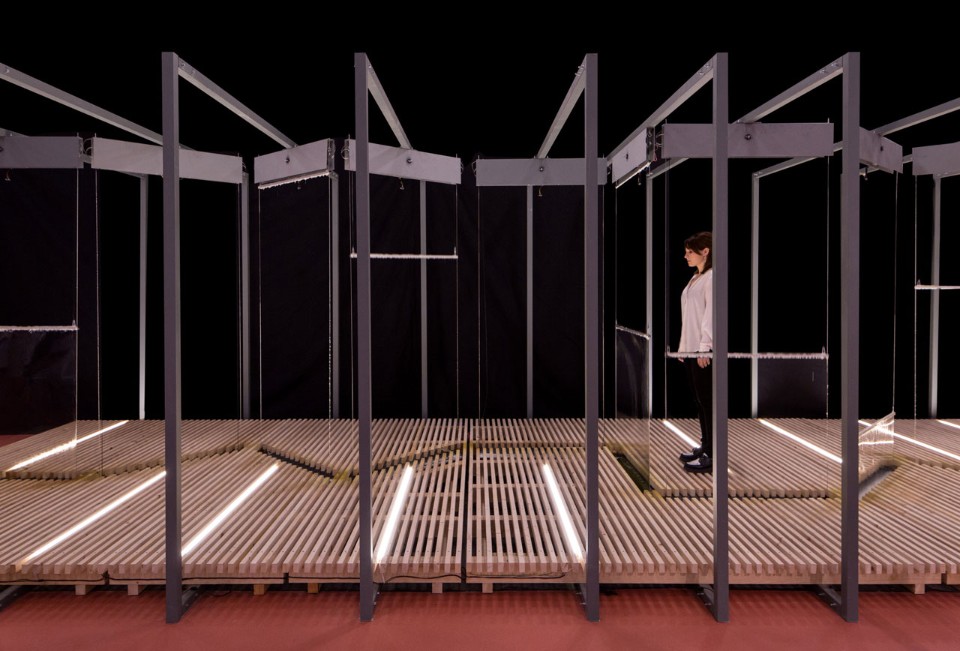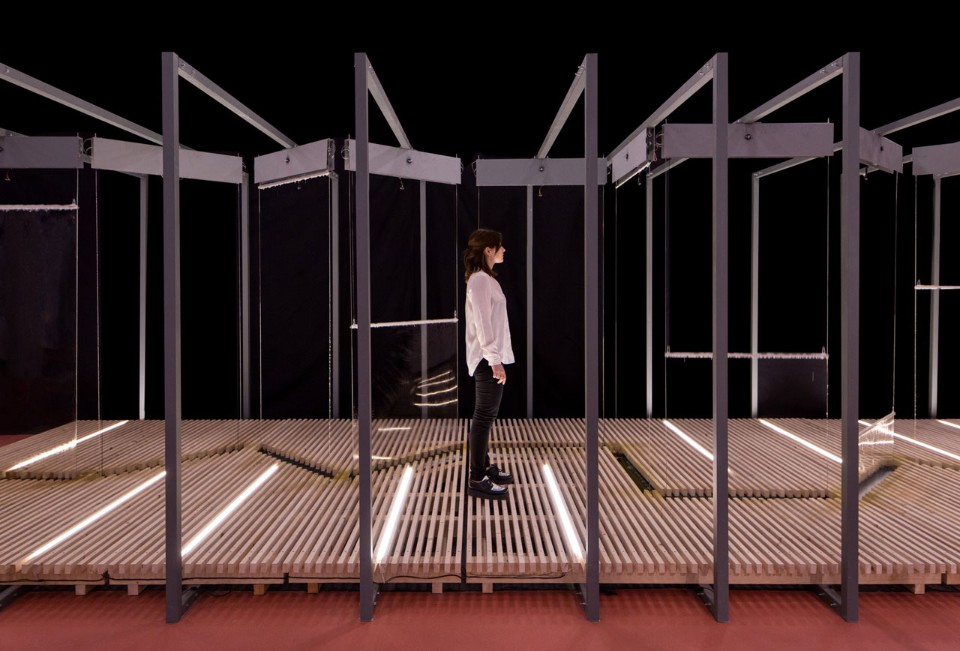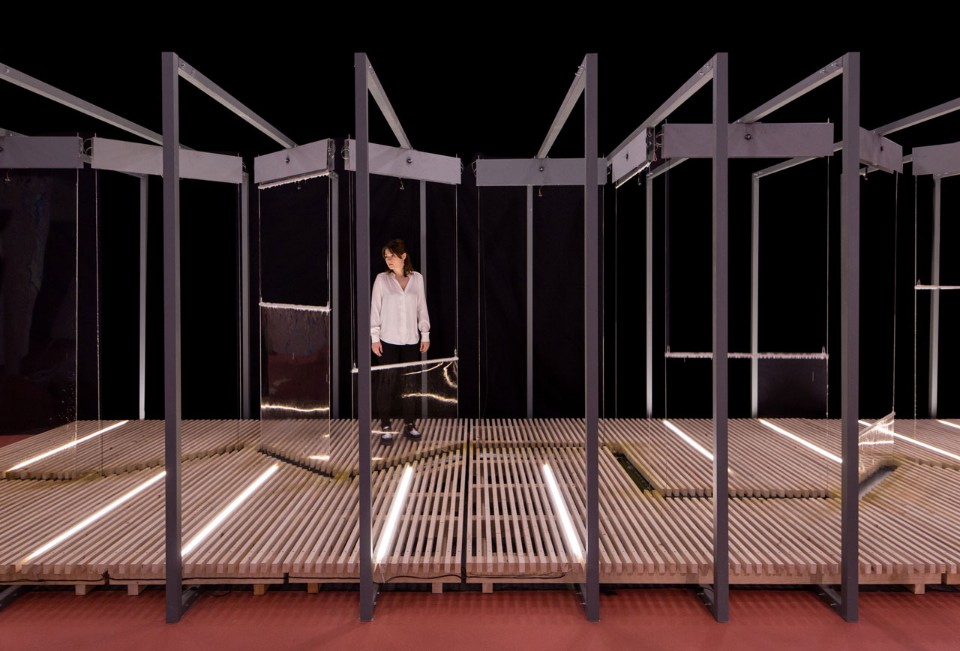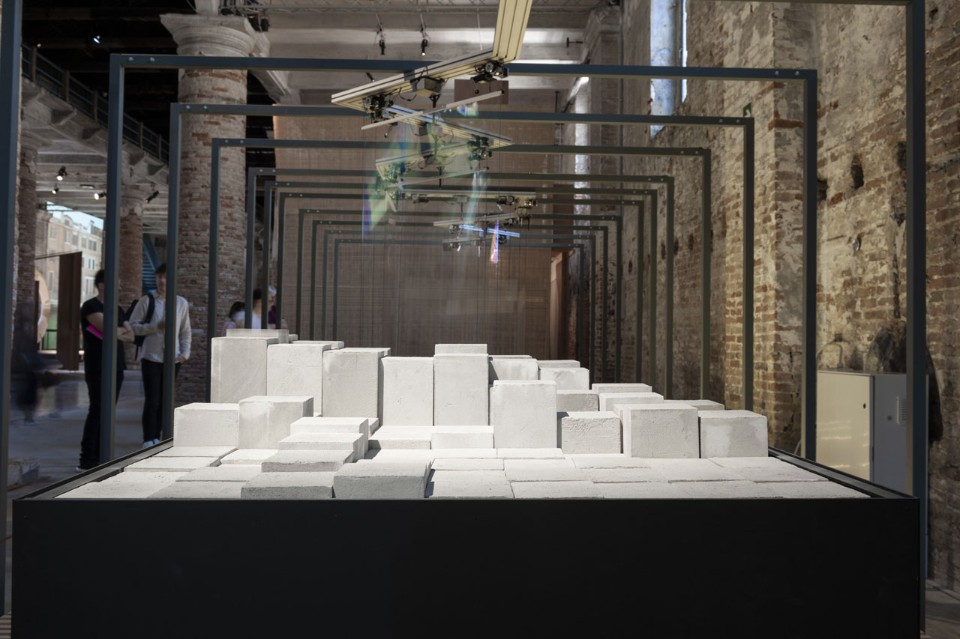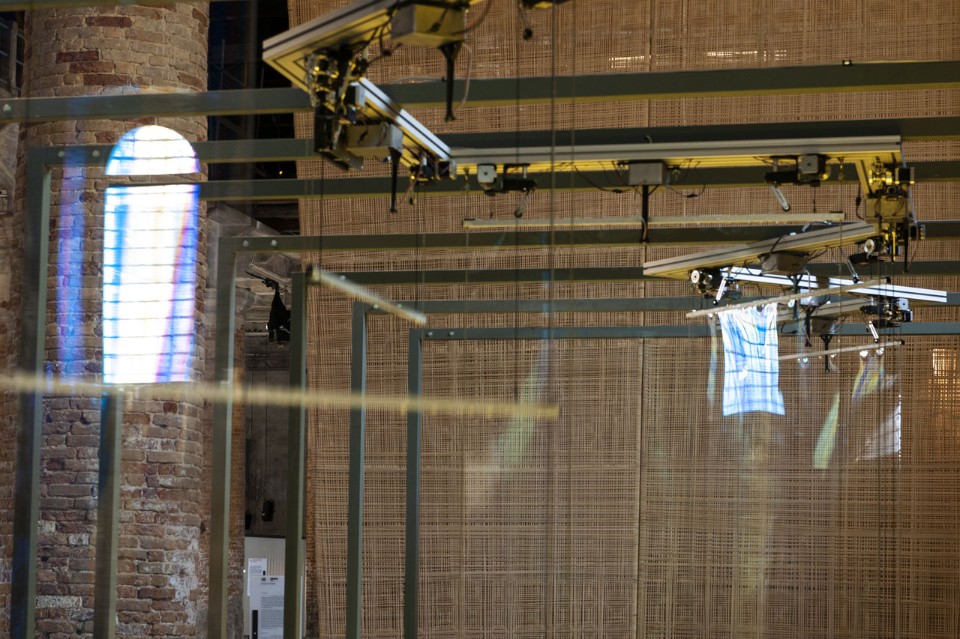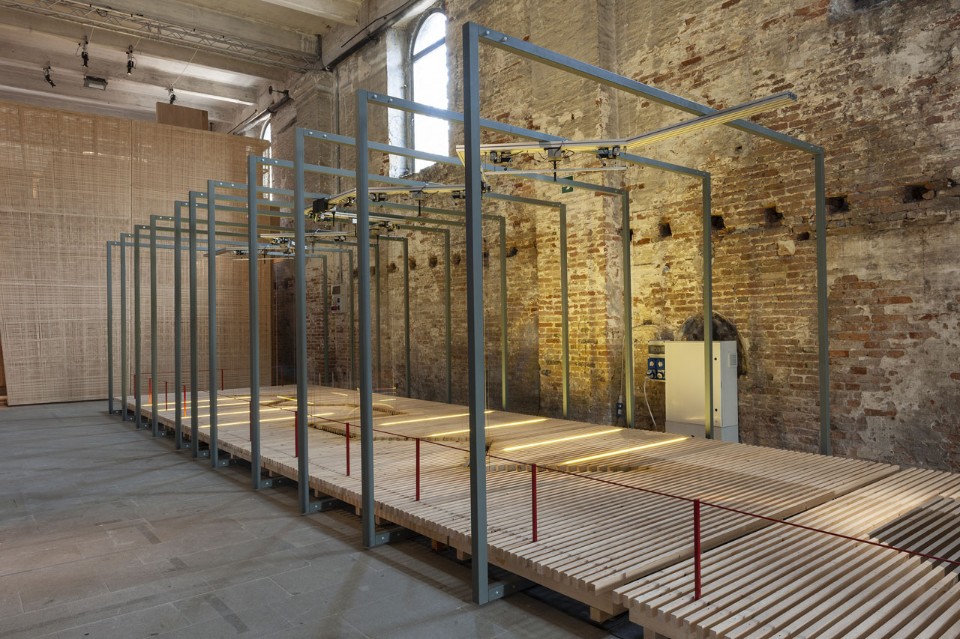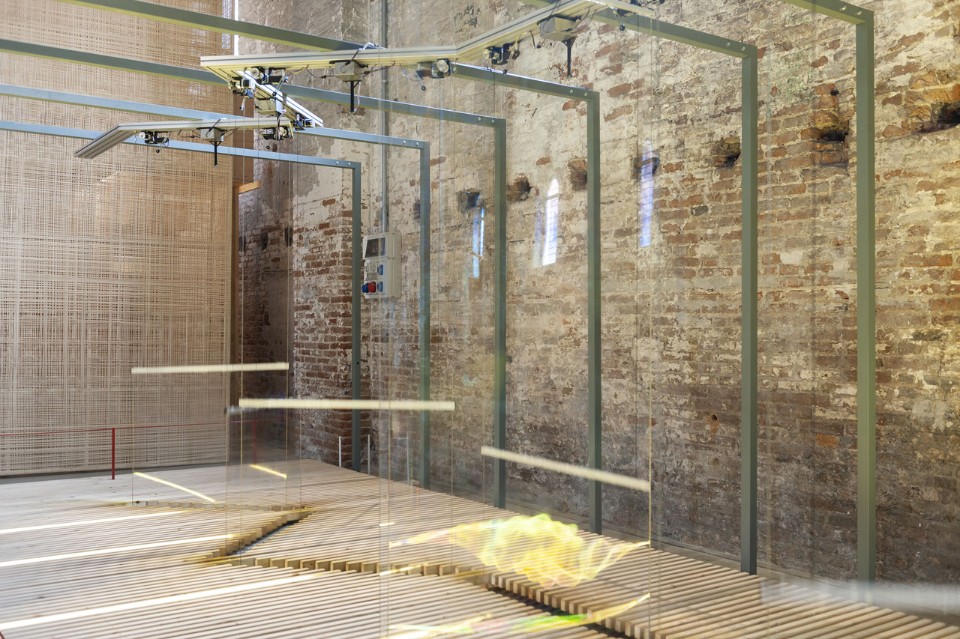Riccardo Blumer’s featured on Domusweb!
Seven automatic architectures and other exercises
Source
By Marianna Guernieri
At the Arsenale, there is a strange machine that produces sheets of soap. It is the perfected result of a collaborative workshop led by Riccardo Blumer, who has been the director of the Academy of Architecture in Mendrisio, Switzerland since 2017. He made this installation with architecture students. Funded by the Madworkshop Foundation from California, it is presented in “The Practice of Teaching” section of the Biennale – at the Arsenale–, and is an exploration of how algorithms can generate new forms of dynamic architecture. Blumer talks to Domusweb about buildings, play and cutting-edge manufacturing technology.
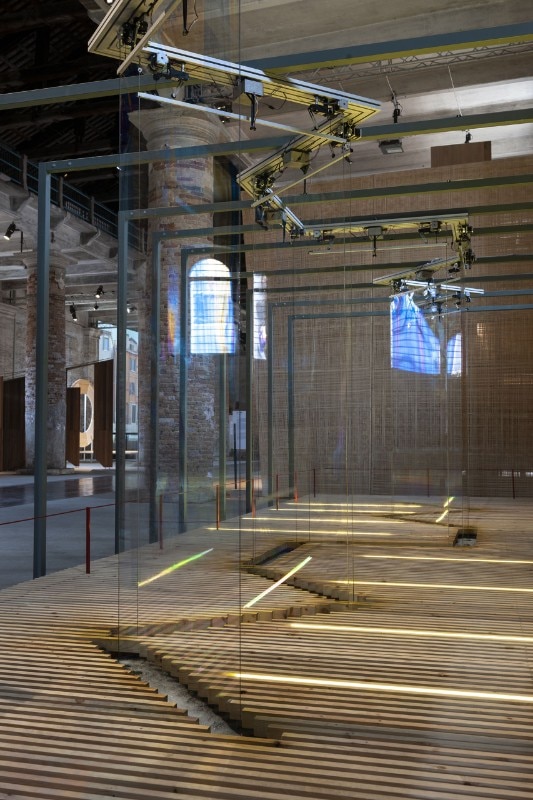
Where did this concept come from?
“Seven automatic architectures” is about experimentation. As always, my workshops explore something we were unable to make. Here, it is architecture that moves. Using artificial intelligence, we worked on a physical object whose duration in time is determined by a machine. One of the results, called Wall, creates 10 panels made of liquid soap, each 1 by 2 metres large. Being flat bubbles, these panels burst after a bit, but the machine keeps on making them. At a certain point, it will succeed in making a big wall. This concept came from the students, and we helped them substantiate it.
Another part of the installation is called Space, an idea by the Greek student Georgios Voutsis. He made moving prisms that are driven by independent motors to create stairs. The machine driving the motors will be able to compose constantly changing compositions of stairs for 250 years. The concept here is a type of architecture that is almost uncontrollable. It is not intelligent, but the possibilities and variability of the shapes are so large that it seems as if the machine were deciding. It’s an exploration of artificial intelligence. The machine does not decide where to go, but controls the rules of the trip.
What is the importance of this mobile architecture?
The importance lies in using the schoolyears for in-depth exploration of knowledge. Once you’re working, it’s difficult to do that, because it has become so complicated. We use the school for experimentation on real things. It’s what I have been doing for a long time with my students. Here with Wall, you see the film of soap because it captures the light, not the other way around. Good architecture offers a stage for light. It can even use a panel of soap to do that. It creates real physicality, not symbolic physicality. It is a wall. You’re either on this side of it, or that side. This is one of the great tenets of architecture: the limit is one of its necessary conditions. Here, we introduce elements that help contradict several concepts. The way I see it, freedom is knowing where to place the limit. When I build a wall, it is not out of fear, not to divide populations, but to give myself a place where I choose to be, meaning a home. It helps us clean up our basal thoughts about the basic elements of architecture.
What is it like to work with today’s students on this kind of topics?
Today’s students often follow stereotypes such as the professional architect, and building. But today’s world is in the process of being turned upside down. It is difficult to get students to budge from their position, to convince them that these exercises will give them the capacity to think hard about that they are doing, help them gain control, and perhaps one day become interesting professionals. This issue is traceable to the great confusion between profession and school. Universities, high schools and elementary schools must teach culture. They are where our civilisation produces the future design of our civilisation. Everyone thinks that school must have a direct link to work. That’s true, but work is a form of culture. You always need to have an ethical hierarchy of values, accompanied by great discipline in technical work. These parameters must be called into play. That’s what I do, and I must say I am happy to see things moving. We are here at the Biennale thanks to a Californian foundation that coincidentally saw the work we did at Mendrisio on display at Villa Panza in Varese, Lombardy, an art centre run by Fondo Ambiente Italiano. They sponsored us, giving us the opportunity to show this machine here. It’s as if we were the Wild West show financed by Americans coming to us in Europe. It’s funny, but it’s really very interesting.
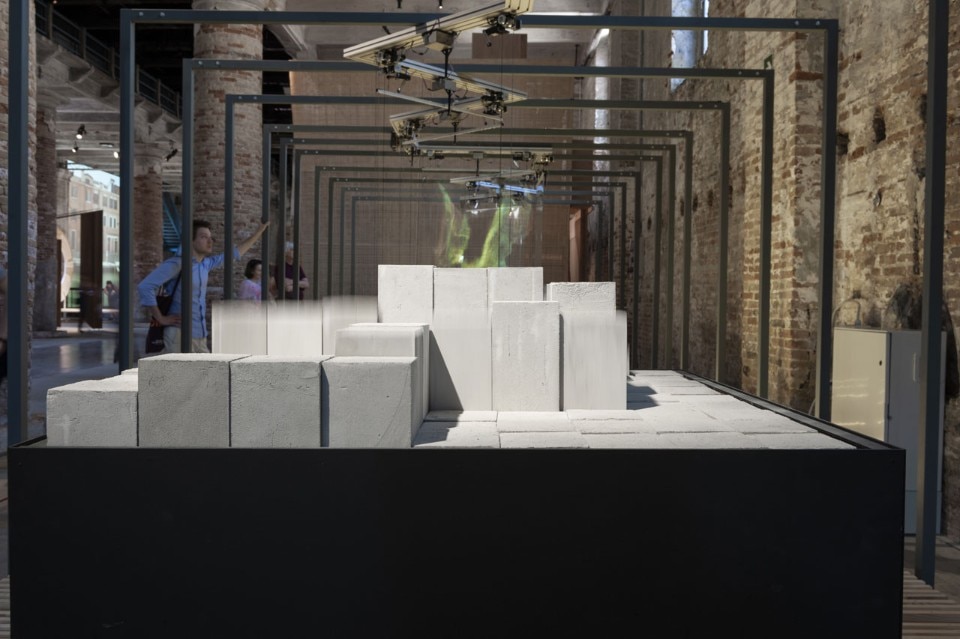 Georgios Voutsis, Space, Biennale di Venezia 2018. Foto Paolo Mazzo
Georgios Voutsis, Space, Biennale di Venezia 2018. Foto Paolo MazzoPlay make us human. It makes you grow up when you’re little, bringing you into a dimension of rules. Like music, where you are taken beyond the unwieldy issue of basic survival.
It’s of fundamental importance. Play is one of the most complex techniques humans invent. Card games, for instance, are highly complex. Some compare it to electronic computing. The game has precise techniques, but makes them all disappear in favour of the recreational element. It’s like clowns; they use precise, elaborate techniques. I love all that; I love dance where you have the impression the movement is done in all liberty, but behind it lies incredible discipline and hard work. I enjoy the Italian philosopher Carlo Sini, who says that we are not the ones who make things, but things are what make us be. Play make us human. It makes you grow up when you’re little, bringing you into a dimension of rules. Like music, where you are taken beyond the unwieldy issue of basic survival. So it is great if this installation is playful, because I can assure you that there is amazing complexity behind it. Globalisation allows us to buy components in China, follow tutorials on YouTube, call a maker and create an accessibly priced structure suited to a school.
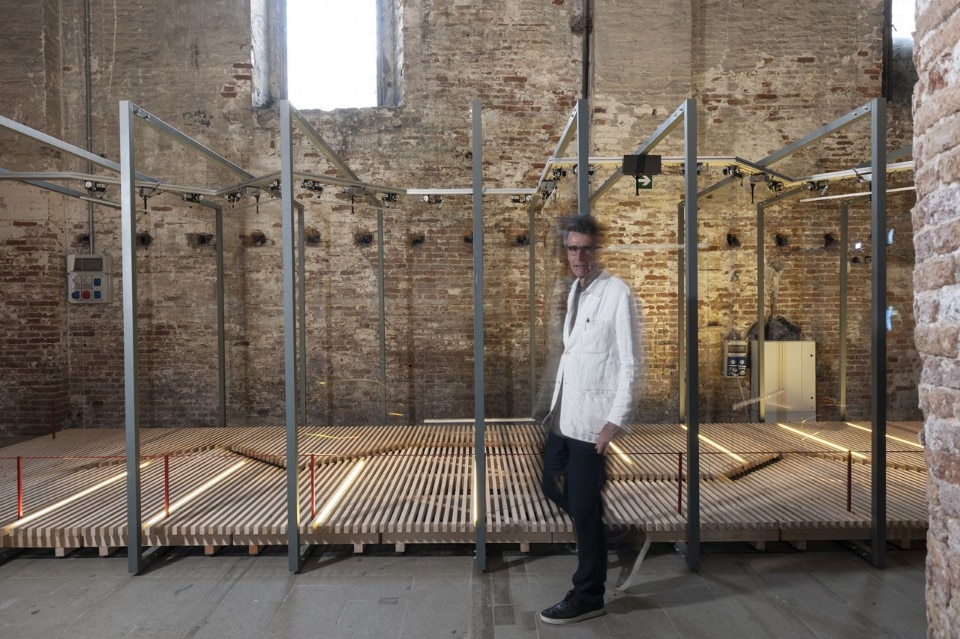 Riccardo Blumer, Venice Architecture Biennale 2018. Photo Paolo Mazzo
Riccardo Blumer, Venice Architecture Biennale 2018. Photo Paolo MazzoTrue, but the Biennale lasts six months, and that duration has us worried (laughs). We had this machine back in Mendrisio. To bring it here, we had to redesign it completely, keeping only the structure and changing the motors, the direction control of the bars, the timers, the sensors and more. According to our forecast, it should last. It is incredibly automated. As architects we are still taking our first steps in the fourth industrial revolution, but we think it’s worth while incorporating this new world into our field. It is a road toward knowledge, as we said before.

